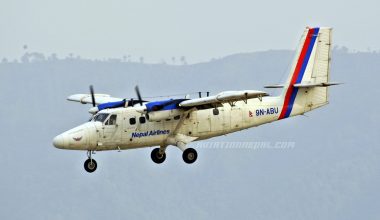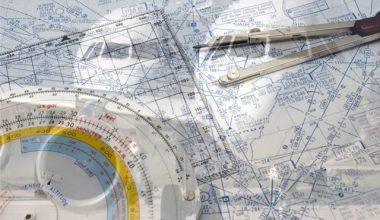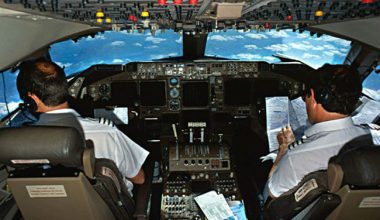The activation of 5G i.e. the fifth-generation mobile network is quintessential for easy accessibility and feasible operations. The 5G service in aircraft allows passengers to work fast on their cellular and other devices in the sky, maximizing their productivity. However, multiple carriers in the US have criticized the rollout of this updated technology due to potential radar altimeter interference. What’s the relationship between airlines and 5G? How is the aviation world reacting to the latest 5G expansion?
Airlines and 5G
5G is one of the most robust technologies in the modern world characterized by high speed, low latency, and massive capacity. The 5G wireless technology has sparked a revolution in telecommunications and many countries are gearing up for this coveted technology. It has ushered in a new era of connection for business, giving people access to more information faster than ever before. But, this ultra-fast superb telecommunication technology has become a topic of a battle between airlines and the telecom industry. How can 5G affect airline operations?

The 5G C-band technology utilizes 3.7-3.98 GHz frequency, close to the global aeronautical band of 4.2-4.4 GHz. The C-band frequency used for 5G in the US sits just a couple of hundred megahertz below the frequencies of altimeters in some aircraft. As a result, the 5G signals can cause harmful interference to radar altimeters aboard airliners, bringing the possibility of catastrophic failures in low visibility situations. An altimeter is a sensor that measures the aircraft’s height above the ground and supplies critical information in many automated landing and collision avoidance systems. It is key safety equipment in aircraft that enables pilots to take off and land in inclement weather (low visibility). It aids many critical safety-of-life aircraft functions throughout multiple flight phases and
If the altimeter experiences interference from 5G mid-band waves, it can give wrong readings or corrupt sensitive aircraft equipment. It may not provide reliable information to perform the intended function during approaches, landings, and go-arounds. The 5G interference can lead to undetected failure of the only sensor onboard and prevent certain airplane systems from warning pilots of real threats. It can result in erroneous altitude measurements, which in turn, can have a multitude of effects on various aircraft systems.
The 5G interference in the radio altimeter can affect onboard systems such as:
- Traffic Collision Avoidance System (TCAS)
- Predictive Windshear System (PWS)
- Ground Proximity Warning System (GPWS)
- Autoland System
- Auto-throttle Automatic Stall Protection
- Autospeed Brake Deployment
- Fly-by-wire system
The 5G interference with vital technological equipment can culminate in degraded deceleration performance, increased landing distance, and runway excursion. The potential equipment failures caused by incorrect radio altimeter readouts can sabotage flight safety and put passengers’ lives at stake.
US aviation’s reaction to 5G activation
The 5G rollout has been the talk of the town in US aviation since the end of last year. The launch of the 5G technology became a matter of controversy with an array of delays and disapprovals from various carriers and the Federal Aviation Administration (FAA) itself. Initially set to roll out in December 2021, AT&T and Verizon finally launched 5G technology on Jan 19, 2022. However, both US largest cellular providers pushed back the plan for the activation of some 5G towers close to airport runways for six months. According to the initial negotiations in January, the wireless companies agreed to buffer zones around certain airports to reduce interference risks and postpone the C-Band 5G rollout for six months.
Also Read: Height call outs on approach and landing
With 5G technology evolving every day, it is impossible to delay the start of this service forever. It’s necessary to enhance service around airports while also protecting commercial air travel from disruption by 5G interference.
The FAA has been hashing out solutions to maintain a finely tuned balance between aviation services and the safe deployment of 5G communications. Recognizing the need to enable aviation and 5G-C band wireless to safely co-exist, the FAA and wireless companies have reached a workable solution and identified a series of steps that would be in favor of both parties.
FAA’s 5G-C band update on June 2022
As per FAA’s statement released on June 2022, the wireless companies will continue interference mitigations through July 2023. AT&T and Verizon voluntarily offered to maintain safety buffering C-band exclusion zones around airports for another year. After that time, the two largest 5G C-band providers expect to scrap the voluntary mitigations and expand their ultra-fast 5G networks in urban areas with limited restrictions.
Meanwhile, the air carriers will have to retrofit their aircraft with updated radio altimeters to defeat potential 5G-C band cellular interference. The FAA’s 5G-C band update requires the nation’s entire fleet of regional and cargo aircraft to install new radar altimeters by the end of this year. Under present requirements, the smaller regional aircraft i.e. Group 1 and 2 aircraft must have upgraded radar altimeters by December 2023. Similarly, the airlines must retrofit radio altimeters on their mainline commercial fleet i.e. Group 3 aircraft by July 2023.
The installment of filters or enhancements on aircraft helps to avoid interference from the latest-generation 5G C-Band wireless service. The new replacements won’t compromise the performance of radio altimeters and avoid 5G interference with airplane navigation systems. The aircraft retrofitted with improved altimeters have low interference risk and can land normally in low-visibility situations. Otherwise, interference from 5G transmissions can bring catastrophic consequences and dire safety situations due to false altitude measurements.
Carriers’ inability to meet the retrofit deadline
Despite the wireless and aviation industries working together to resolve 5G issues, airlines are struggling with retrofitting operations. If the July 2023 deadline isn’t extended, the aircraft without improved altimeters might be restricted to fly in the US airspace from Feb 2024.
Citing the global supply chain issues, Airlines for America, Boeing, Airbus, Embraer, the aviation union, and others signed a letter asking the FAA to extend the retrofitting deadline. On November 15, the coalition of aviation stakeholders sent a letter to the National Economic Council Secretary of Commerce, Secretary of Transportation, US Department of Commerce, and other government agencies, asking for more time to execute radar altimeter retrofits.
The joint letter explained the RA manufacturers’ and carriers’ inability to fully meet either Dec 2022 or July 2023 retrofit deadline. It noted worldwide supply-chain issues and lack of a certified solution for one key RA as key reasons and requested to put signal interference mitigation in place until the 2023 end.
To chart a path forward for 5G deployment and aviation to safely co-exist, the FAA has been collaborating with aviation and wireless stakeholders. However, the International Air Transport Association (IATA) condemned FAA’s June statement, calling it to be Adhoc and unrealistic pronouncement. The association expressed strong disappointment with the announcement, telling there was no consensus among impacted airlines regarding the deadline.
The letter sent on November 15 mentioned the real threat from 5G interference and added that the failure to extend mitigations could disrupt air traffic and cause flight delays which would ultimately affect passengers and shippers.
European airlines to use 5G in planes
Unlike US aviation, the European Union seems positive to execute high-speed 5G technology. As per the latest EU digital strategy planning, European passengers may soon get to use 5G onboard the aircraft. The new 5G communication services onboard the aircraft will replace the in-flight Wi-Fi service. The super-fast, high-speed connectivity will create endless opportunities for passengers to stream, game, or work flexibly in the air.
The lower-elevation flights will avail 4G and 5G onboard for passengers to connect on their mobile phones. On the other hand, the European aircraft will switch to using ‘pico-cells’ in higher altitudes which keeps cockpit communications at 4.2-4.4 GHz. But the cellular network will be connected to 5GHz frequency to prevent potential interference.
The European Union will set the timeline for 5G implementation abroad the aircraft. The days may not be so far as the commission is gearing up to equip the 5GHz frequency band for road vehicles before June 30, 2023.
Why is 5G a major issue in the US?
The 5G mobile service is still a major concern in the US although other countries are already using this spectrum without any issue. In some countries like Japan, Denmark, South Korea, etc., the 5G signals operate in a spectrum adjacent to aviation equipment, yet no interference issue has been reported. Depending on the geography, power levels, etc., these countries usually set the 5G frequency lower than the spectrum used for altimeters. The radio spectrum frequencies allocated to 5G are mid-range i.e. 3.4-3.8, much lower than what’s permitted in the US.
The deployment of 5G is a top issue in the US because there is less frequency spectrum spacing between 5G and radar altimeters. The C-band frequencies in the US range between 3.7 and 3.98, which is near to those used by altimeters in flight. For the short term, US aviation will continue to avoid the 5G interference disruption by turning off some wireless towers near key airports. But, for the long term, FAA must make a way forward by cooperating and coordinating with all stakeholders to address the issue.








